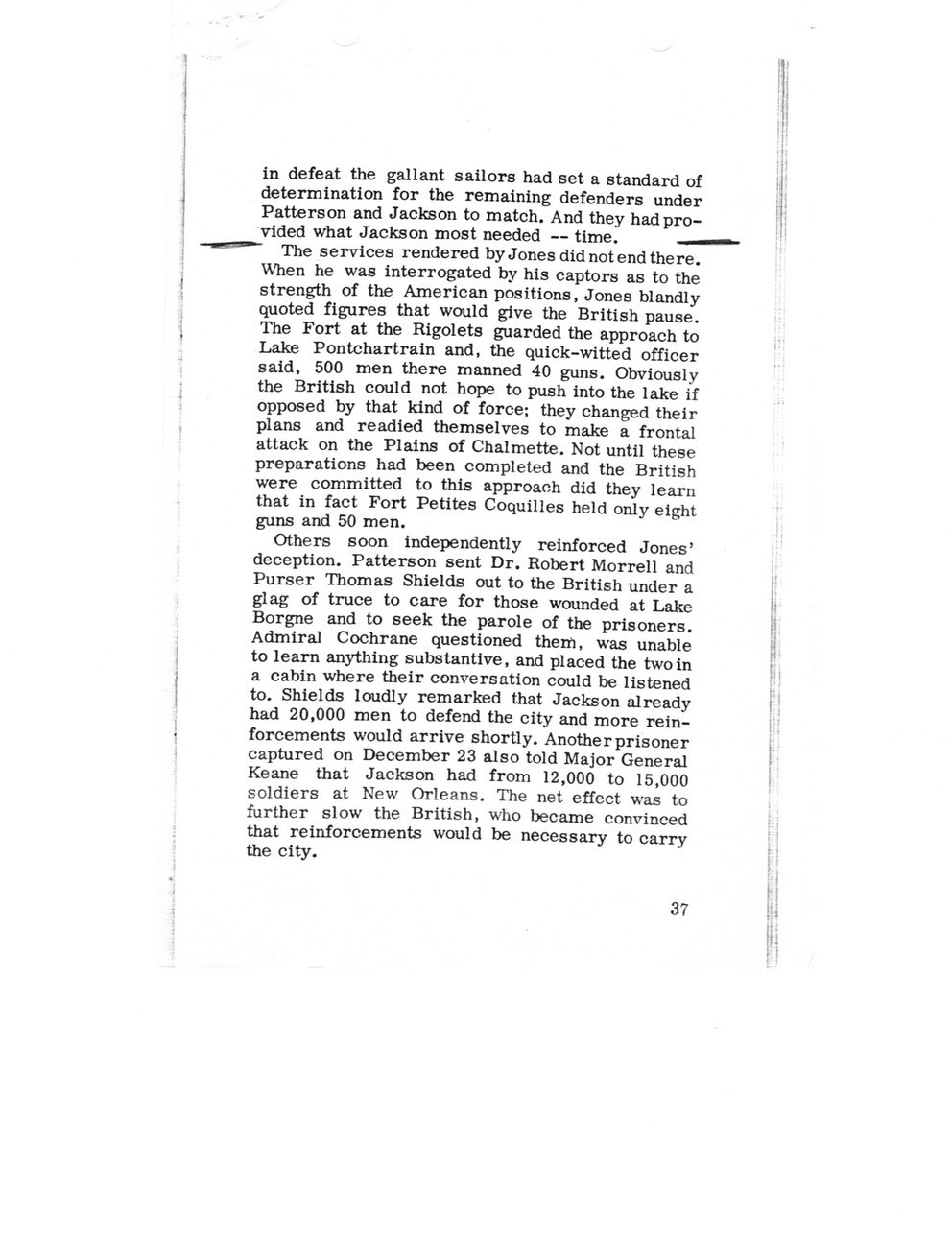This text was obtained via automated optical character recognition.
It has not been edited and may therefore contain several errors.
in defeat the gallant sailors had set a standard of determination for the remaining defenders under Patterson and Jackson to match. And they had provided what Jackson most needed ? time. _ The services rendered by Jones did not end there. When he was interrogated by his captors as to the strength of the American positions, Jones blandly quoted figures that would give the British pause. The Fort at the Rigolets guarded the approach to Lake Pontchartrain and, the quick-witted officer said, 500 men there manned 40 guns. Obviously the British could not hope to push into the lake if opposed by that kind of force; they changed their plans and readied themselves to make a frontal attack on the Plains of Chalmette. Not until these preparations had been completed and the British were committed to this approach did they learn that in fact Fort Petites Coquilles held only eight guns and 50 men. Others soon independently reinforced Jones? deception. Patterson sent Dr. Robert Morrell and Purser Thomas Shields out to the British under a glag of truce to care for those wounded at Lake Borgne and to seek the parole of the prisoners. Admiral Cochrane questioned theifi, was unable to learn anything substantive, and placed the two in a cabin where their conversation could be listened to. Shields loudly remarked that Jackson already had 20,000 men to defend the city and more reinforcements would arrive shortly. Another prisoner captured on December 23 also told Major General Keane that Jackson had from 12,000 to 15,000 soldiers at New Orleans. The net effect was to further slow the British, who became convinced that reinforcements would be necessary to carry the city.

Battle of 1814 P37